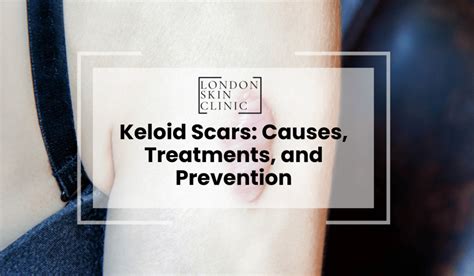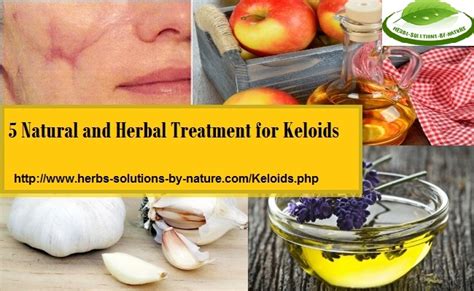Intro
Discover if keloids can fade naturally. Learn about natural remedies, scar treatment, and prevention methods to reduce keloid appearance and promote skin healing, without surgery.
Keloids are a type of raised scar that can appear after an injury to the skin, and they can be quite frustrating to deal with. While they are generally harmless, keloids can be itchy, painful, and unsightly, which is why many people wonder if they can go away naturally. The good news is that, in some cases, keloids can indeed fade or shrink on their own over time. However, this process can take years, and the likelihood of a keloid going away naturally depends on various factors, such as the size and location of the keloid, as well as the individual's skin type and overall health.
For those who are dealing with keloids, it's essential to understand that these scars are a result of the body's natural healing process. When the skin is injured, the body produces collagen to repair the damage, and in some cases, this can lead to the formation of a keloid. While keloids can be a nuisance, they are not a sign of any underlying health issue, and they do not typically require medical attention. Nevertheless, if you're concerned about the appearance of a keloid or if it's causing discomfort, it's always best to consult with a healthcare professional for advice.
In many cases, keloids can be treated with various remedies, such as topical creams, silicone gel sheets, or even surgical removal. However, these treatments may not be necessary if the keloid is small or not causing any issues. If you're wondering whether your keloid can go away naturally, it's crucial to be patient and give your skin time to heal. With proper care and attention, it's possible to reduce the appearance of a keloid and promote healthy skin growth.
Understanding Keloids

To better understand keloids, it's essential to know how they form and what factors contribute to their development. Keloids are characterized by an overgrowth of scar tissue, which can be caused by a combination of genetic and environmental factors. For instance, people with darker skin tones are more prone to developing keloids, as are those who have a family history of keloid formation. Additionally, keloids are more likely to occur in areas of the body that are prone to tension, such as the chest, back, or shoulders.
Keloids can also be triggered by various types of skin injuries, including cuts, burns, piercings, or acne. In some cases, keloids can even form spontaneously, without any apparent cause. While the exact mechanisms behind keloid formation are not fully understood, research suggests that it may be related to an abnormal response to skin injury, which leads to an overproduction of collagen and other growth factors.
Causes of Keloids
Keloids can be caused by a variety of factors, including: * Genetic predisposition * Skin injuries, such as cuts, burns, or piercings * Acne or other skin conditions * Tension on the skin, particularly in areas like the chest, back, or shoulders * Hormonal changes, such as those experienced during pregnancy or pubertyTreatment Options for Keloids

While some keloids may go away naturally, others may require treatment to reduce their appearance or alleviate symptoms. There are various treatment options available for keloids, ranging from topical creams and silicone gel sheets to surgical removal or laser therapy. The choice of treatment depends on the size and location of the keloid, as well as the individual's skin type and overall health.
Topical creams and gels, such as silicone or retinoid-based products, can help to flatten and soften keloids, reducing their appearance over time. These treatments are often used in combination with other therapies, such as compression bandages or massage, to promote healthy skin growth and prevent further keloid formation.
Benefits of Topical Treatments
Topical treatments for keloids offer several benefits, including: * Easy to apply and use * Minimally invasive, with few side effects * Can be used in combination with other treatments * May help to reduce the appearance of keloids over timeNatural Remedies for Keloids

In addition to medical treatments, there are several natural remedies that may help to reduce the appearance of keloids or prevent their formation. These remedies include:
- Aloe vera gel, which can help to soothe and calm the skin
- Tea tree oil, which has antibacterial and anti-inflammatory properties
- Vitamin E oil, which can help to promote healthy skin growth and reduce scarring
- Massage, which can help to break up scar tissue and promote blood flow to the affected area
It's essential to note that while these natural remedies may be helpful, they may not be effective for everyone, and it's always best to consult with a healthcare professional before trying any new treatments.
Preventing Keloids
Preventing keloids is often easier than treating them, and there are several steps you can take to reduce your risk of developing these scars. These include: * Keeping the skin moisturized and hydrated * Avoiding tight clothing or accessories that can put tension on the skin * Protecting the skin from injury, such as by wearing protective gear when engaging in sports or activities * Avoiding piercings or other skin injuries, particularly in areas prone to keloid formationConclusion and Next Steps

In conclusion, keloids are a common type of raised scar that can appear after an injury to the skin. While they can be frustrating to deal with, there are several treatment options available, ranging from topical creams and silicone gel sheets to surgical removal or laser therapy. By understanding the causes of keloids and taking steps to prevent their formation, you can reduce your risk of developing these scars and promote healthy skin growth.
If you're concerned about a keloid or would like to learn more about treatment options, it's always best to consult with a healthcare professional. They can provide personalized advice and guidance, helping you to make informed decisions about your skin health.
We invite you to share your thoughts and experiences with keloids in the comments below. Have you dealt with keloids in the past, or are you looking for advice on how to prevent their formation? Let us know, and we'll do our best to provide helpful tips and guidance.
What causes keloids to form?
+Keloids are caused by an overgrowth of scar tissue, which can be triggered by a combination of genetic and environmental factors, including skin injuries, tension on the skin, and hormonal changes.
Can keloids be prevented?
+Yes, keloids can be prevented by taking steps to reduce your risk of developing these scars, such as keeping the skin moisturized and hydrated, avoiding tight clothing or accessories, and protecting the skin from injury.
What are the best treatment options for keloids?
+The best treatment options for keloids depend on the size and location of the keloid, as well as the individual's skin type and overall health. Topical creams and gels, silicone gel sheets, and surgical removal or laser therapy are all potential treatment options.
